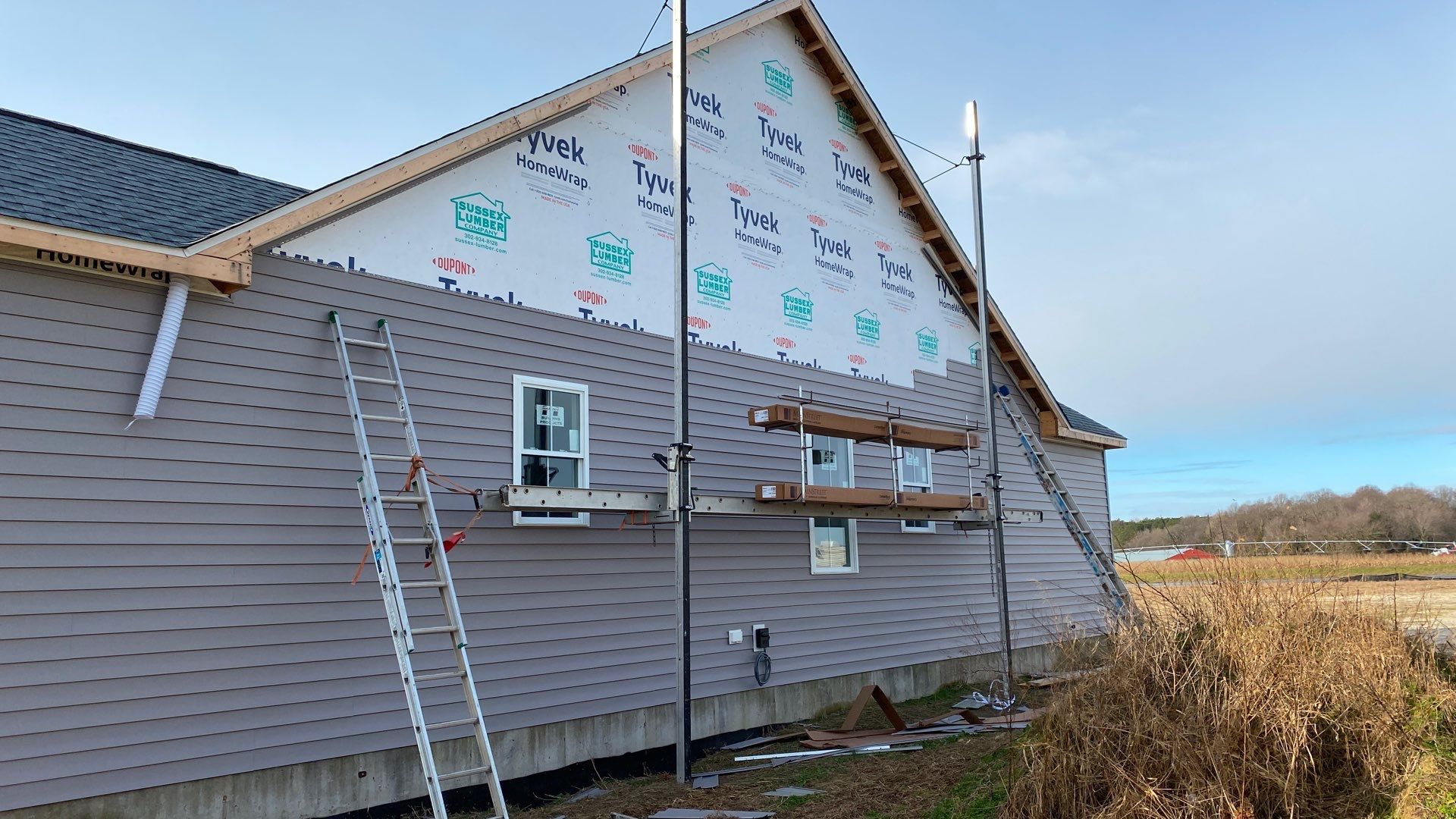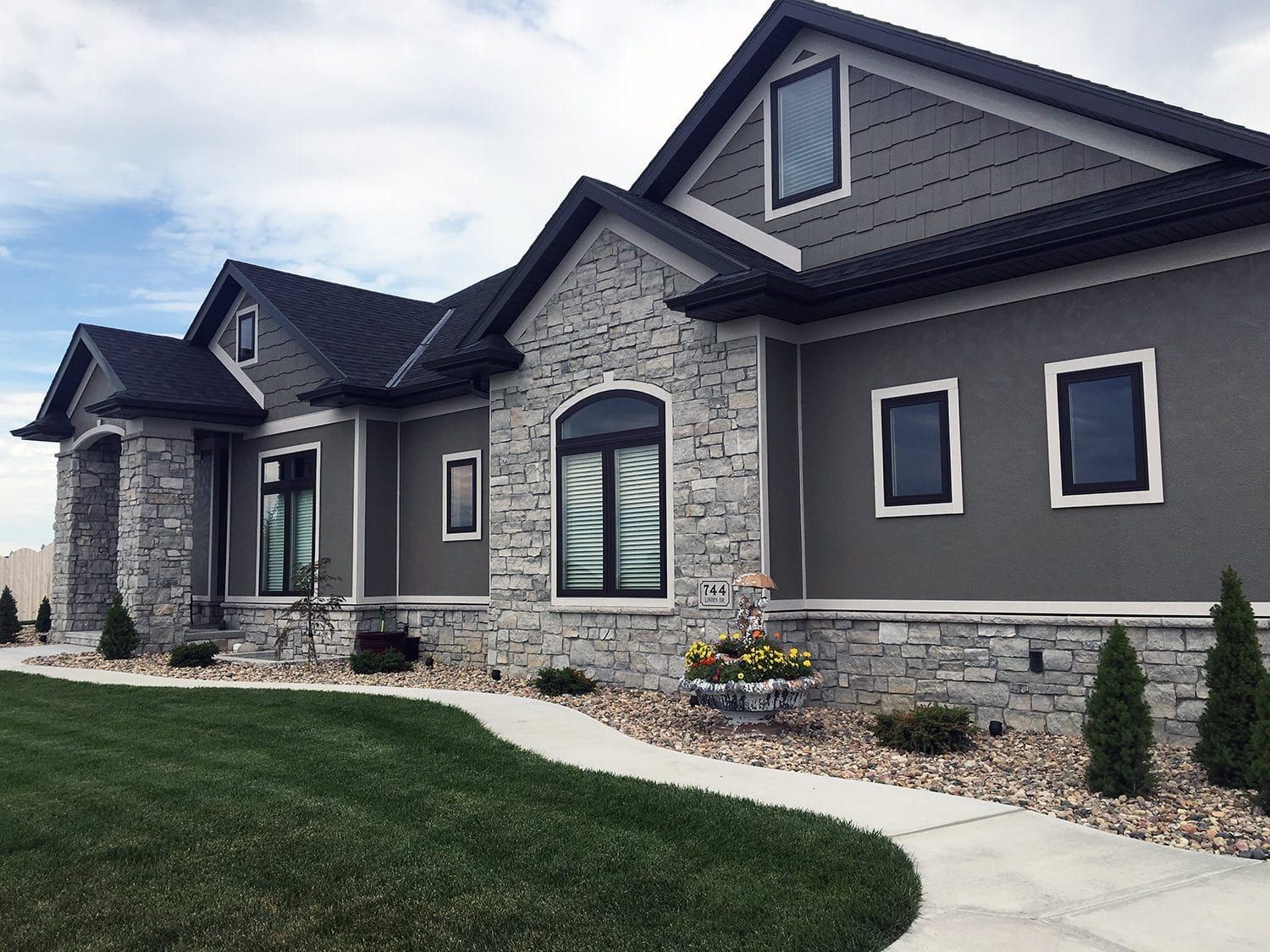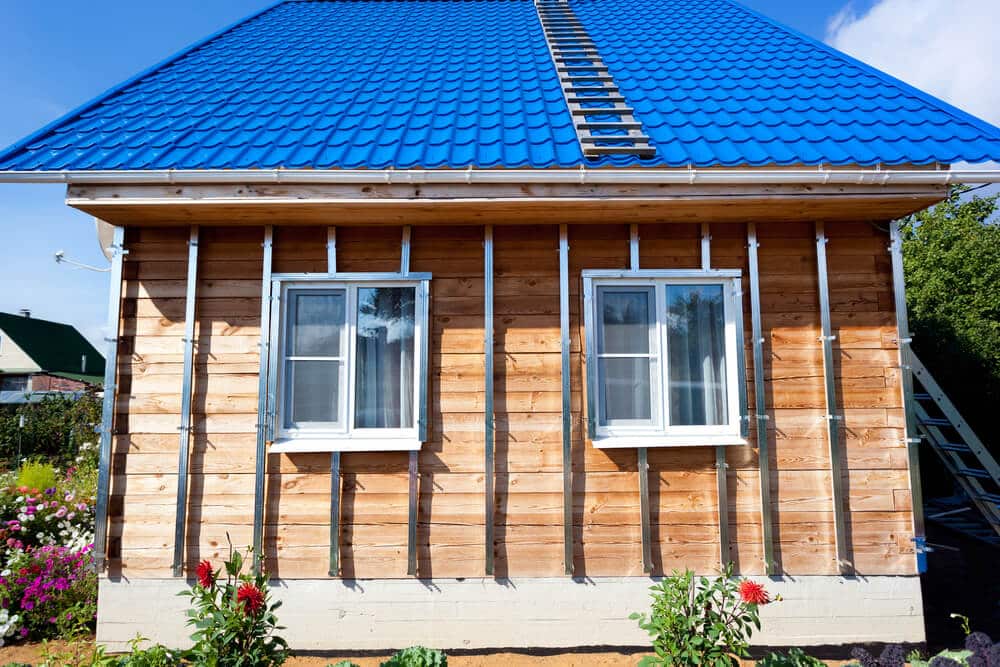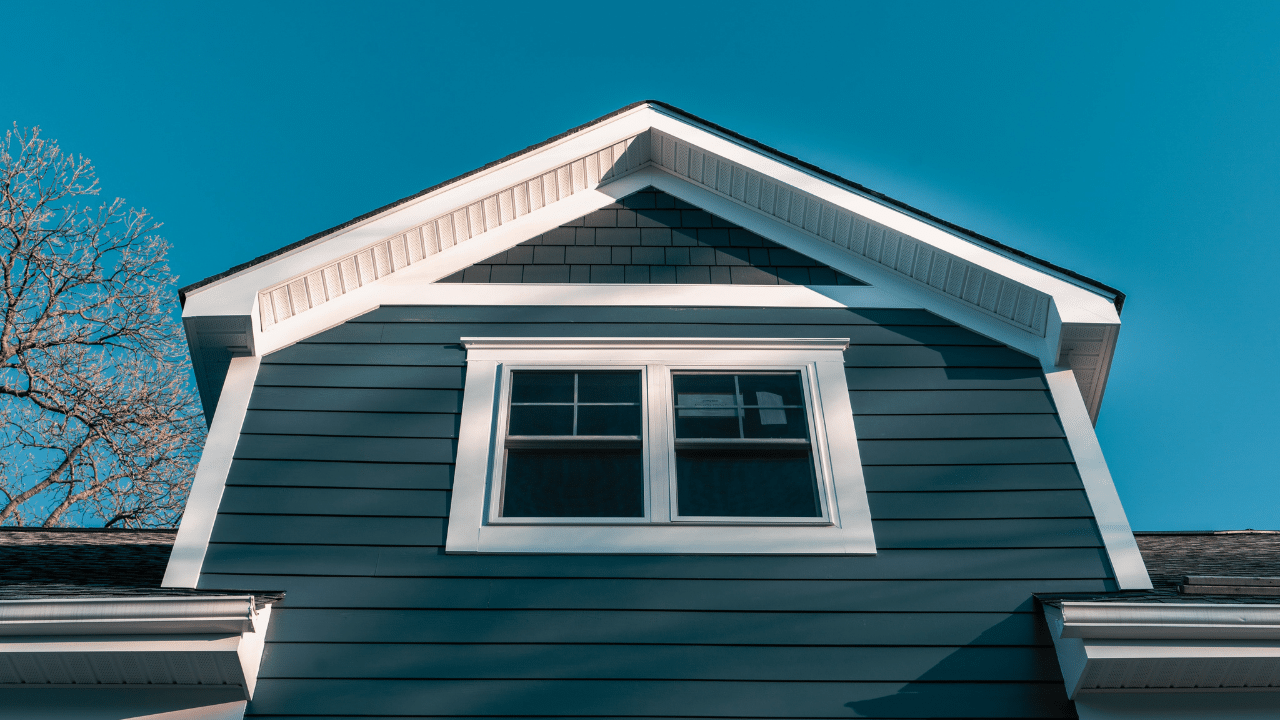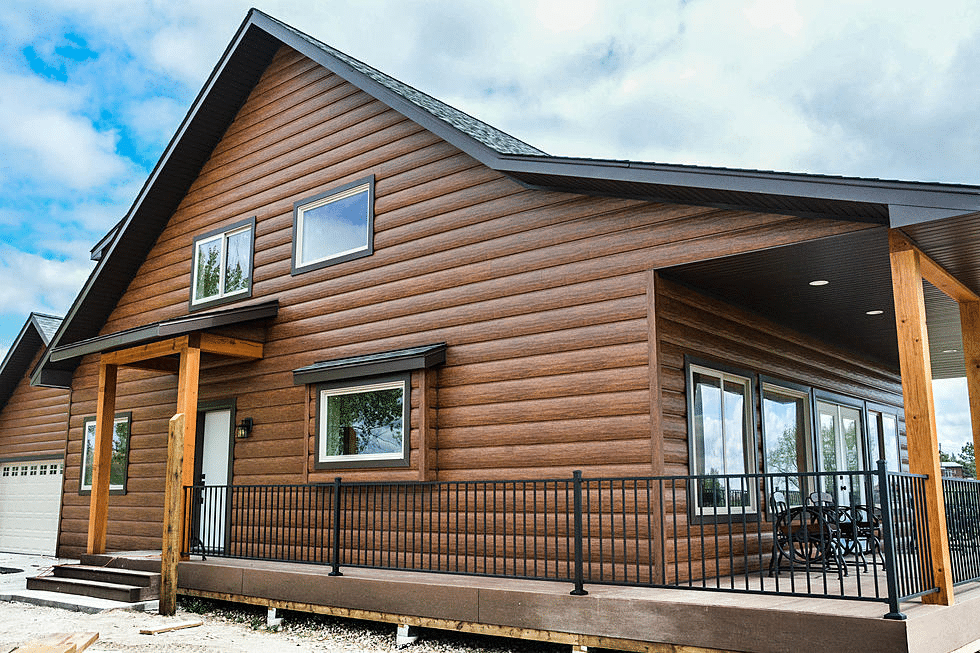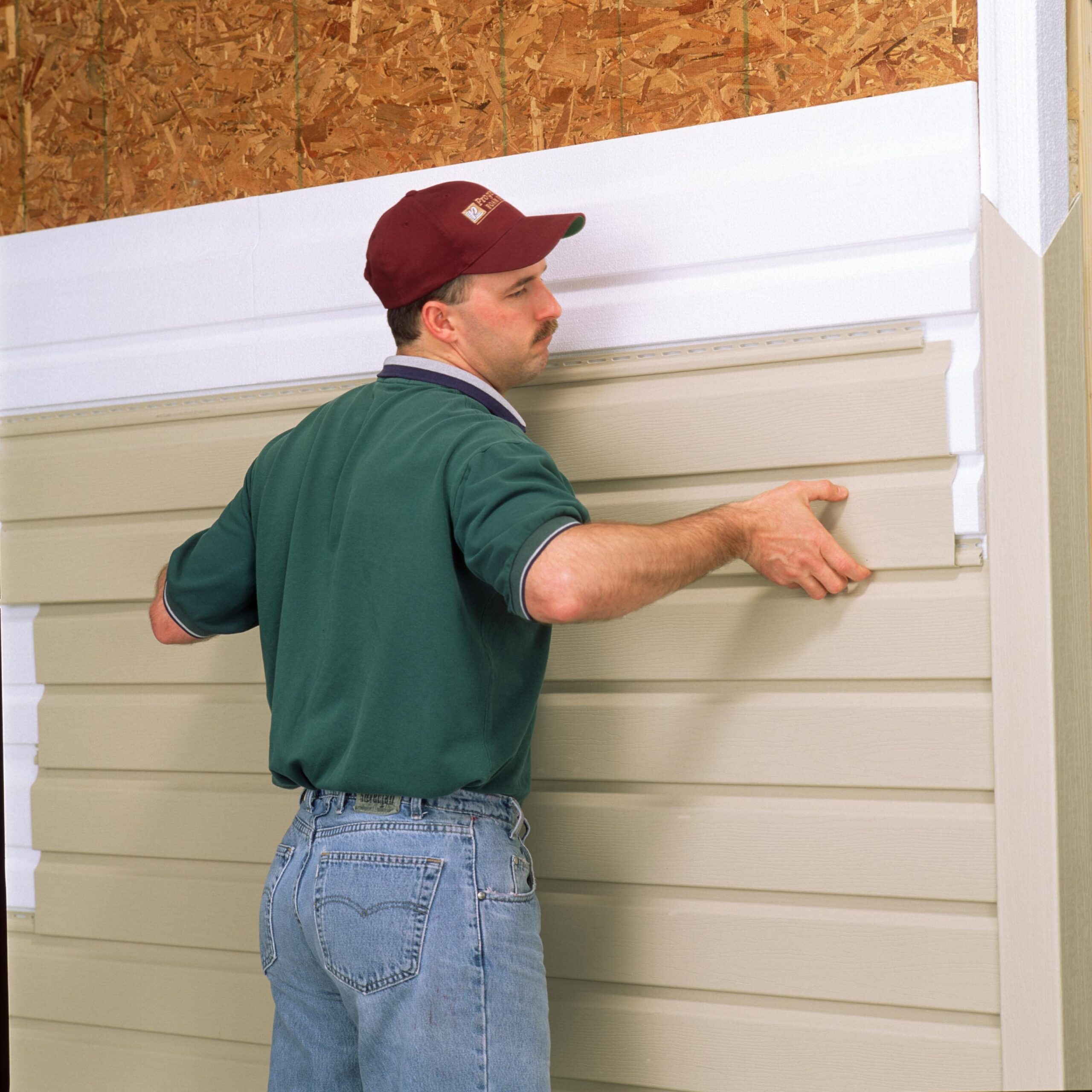Green Insulated Siding Options
Green insulated siding options are transforming home exteriors, offering a blend of energy efficiency, environmental responsibility, and aesthetic appeal. This exploration delves into the various types of eco-friendly siding available, their installation, long-term costs, and environmental benefits. We’ll compare different materials, examining their thermal performance, lifespan, and maintenance needs to help you make an informed decision for your home.
From understanding the initial investment and calculating return on investment (ROI) to exploring the detailed installation process and long-term maintenance, this guide provides a comprehensive overview of green insulated siding. We’ll uncover the environmental impact of each option, highlighting the significant contribution to reduced energy consumption and a smaller carbon footprint. Ultimately, we aim to equip you with the knowledge necessary to choose the best sustainable siding solution for your needs.
Types of Green Insulated Siding
Choosing green insulated siding involves considering various materials with different environmental impacts and performance characteristics. This section details common options, comparing their thermal efficiency, sustainability, and cost-effectiveness.
Green Insulated Siding Materials
Several materials offer a blend of insulation and exterior cladding, contributing to energy efficiency and reduced environmental impact. These include:
- Fiber Cement Siding with Foam Insulation: This combines the durability and fire resistance of fiber cement with the insulating properties of expanded polystyrene (EPS) or polyisocyanurate (polyiso) foam. Manufacturing involves mixing cement, cellulose fibers, and other additives, then forming and curing the panels. The foam is often adhered to the back of the fiber cement panel.
- Insulated Vinyl Siding: Vinyl siding panels are manufactured by extruding polyvinyl chloride (PVC) resin. Insulated versions incorporate a foam core, typically EPS or polyiso, for enhanced thermal performance. The manufacturing process involves blending PVC resin with additives, extruding it into panels, and then bonding the foam core.
- Wood Fiber Siding with Insulation: This utilizes wood fibers, often reclaimed or rapidly renewable, combined with a binder and sometimes insulation board. The manufacturing process involves mixing the wood fibers with the binder, forming panels, and often adding an integrated layer of foam insulation. Examples include products made with recycled wood pulp.
- Recycled Plastic Siding: Made from recycled plastics such as HDPE (high-density polyethylene) and other post-consumer plastics. These panels are often produced through a process of melting and extruding the recycled plastic, sometimes incorporating insulation directly into the panel’s structure.
Thermal Performance Comparison
The thermal performance of insulated siding is crucial for energy efficiency. It’s primarily measured by the R-value, which indicates resistance to heat flow. Higher R-values mean better insulation.
While specific R-values vary based on thickness and material composition, generally:
- Fiber cement with foam insulation typically offers R-values ranging from R-8 to R-15 depending on the foam thickness.
- Insulated vinyl siding R-values usually fall between R-5 and R-10, varying significantly based on the foam core.
- Wood fiber siding with insulation can achieve R-values similar to insulated vinyl siding, though this depends heavily on the wood fiber density and added insulation.
- Recycled plastic siding R-values are often lower, typically ranging from R-4 to R-7, due to the material’s lower inherent insulating capacity.
Sustainability Aspects
The sustainability of green insulated siding depends on several factors:
- Sourcing: Recycled content in materials like recycled plastic siding and wood fiber siding significantly reduces the environmental burden of raw material extraction. The use of rapidly renewable wood sources for wood fiber siding also enhances sustainability.
- Manufacturing Impact: Manufacturing processes vary in energy consumption and emissions. Fiber cement production, for example, involves high energy use in the cement manufacturing process. The use of recycled materials can mitigate this.
- End-of-Life Considerations: The recyclability and potential for reuse or repurposing at the end of the siding’s lifespan are crucial. Some materials, like vinyl siding, have lower recyclability rates compared to others like wood fiber siding which can be composted.
Green Insulated Siding Comparison Table
| Material | Cost | Lifespan (Years) | Maintenance | Environmental Impact |
|---|---|---|---|---|
| Fiber Cement with Foam | High | 50+ | Low | Moderate (depending on cement sourcing and foam type) |
| Insulated Vinyl | Medium | 30-40 | Low | Moderate (PVC production impacts) |
| Wood Fiber with Insulation | Medium | 30-40 | Medium | Low (if using recycled or sustainably sourced wood) |
| Recycled Plastic | Medium-High | 25-35 | Low | Low (depending on recycling process and plastic type) |
Installation Methods and Considerations
Installing green insulated siding requires careful planning and execution to ensure a long-lasting, energy-efficient exterior. The specific methods vary depending on the type of siding chosen, but common steps and considerations apply across the board. Proper preparation and the use of appropriate tools are crucial for a successful installation.
Tools and Equipment for Green Insulated Siding Installation
A range of tools and equipment are necessary for professional installation, depending on the specific siding type. Generally, you’ll need measuring tapes, levels, saws (circular saw for cutting fiber cement, for example, and possibly a hand saw for trim work), drills, impact drivers, safety glasses, work gloves, ladders, scaffolding (for taller buildings), and potentially a nail gun for faster fastening. Specific tools like specialized cutters might be needed for certain types of siding, such as certain composite materials. For example, installing fiber cement siding might require a wet saw to prevent dust inhalation, while vinyl siding usually requires less specialized tools.
Preparation for Green Insulated Siding Installation
Before beginning installation, thorough preparation is key. This includes inspecting the existing wall sheathing for damage or rot and making necessary repairs. Any existing siding must be removed carefully, ensuring the underlying structure is sound. The wall should be clean and dry, and any protruding nails or other fasteners should be removed or hammered flush. Finally, a moisture barrier, like house wrap, is typically applied to protect the wall from moisture intrusion. This is especially important with green insulated siding, as it relies on insulation properties for energy efficiency and preventing moisture damage will maximize its benefits.
Fastening and Finishing Green Insulated Siding
The fastening method depends heavily on the siding material. Vinyl siding typically uses nails or staples, while fiber cement siding may require specialized screws. Each siding type will have recommended spacing and penetration depths for optimal performance and to avoid damage. Over-fastening can lead to cracking, while under-fastening can lead to loose siding and potential damage from wind or weather. Finishing involves trimming and sealing around windows, doors, and other features. Caulk is used to create a weather-tight seal, and trim pieces are installed to provide a neat and professional finish. Proper flashing is crucial around openings to prevent water penetration.
Common Installation Challenges and Solutions
One common challenge is uneven surfaces. Shimming can be used to create a level surface for installation. Another challenge is working with varying weather conditions. Extreme heat can cause expansion, while cold temperatures can make materials brittle. Planning installation for moderate weather conditions is advisable. Finally, cutting the siding accurately to fit around corners and openings requires careful measurement and cutting techniques to avoid mistakes that can lead to significant rework. Using a quality measuring tape and taking extra time for precise cuts is crucial.
Step-by-Step Visual Guide: Installing Insulated Vinyl Siding
This guide details the installation of insulated vinyl siding. Remember, always consult the manufacturer’s instructions for specific details and recommendations.
- Preparation: Inspect the wall, remove old siding, repair any damage, and install house wrap. Ensure the wall is clean and dry.
- Start Rail Installation: Install the starting rail along the bottom of the wall, ensuring it’s level and plumb. This provides a straight edge for subsequent panels.
- Panel Installation: Begin installing the first panel, engaging the bottom edge with the starting rail. Use appropriate fasteners to secure the panel, ensuring consistent spacing and avoiding over-fastening.
- Subsequent Panels: Install subsequent panels, overlapping each panel with the previous one, ensuring a tight fit. Use a level to check alignment and adjust as needed.
- Corner and J-Channel Installation: Use J-channel to finish exterior corners and around windows and doors. This creates a neat and weather-tight finish.
- Finishing: Cut and install trim pieces to complete the installation. Use caulk to seal any gaps or seams, ensuring a weather-tight seal.
Environmental Impact and Benefits
Choosing green insulated siding offers significant environmental advantages over traditional materials. The reduced energy consumption resulting from superior insulation translates directly into lower greenhouse gas emissions and a smaller carbon footprint throughout the building’s lifespan. This section details the specific environmental benefits and associated data.
The environmental impact of green siding varies depending on the specific material used. For example, fiber cement siding generally has a higher embodied carbon footprint due to the energy-intensive cement production process, compared to wood siding sourced from sustainably managed forests. However, the long-term energy savings from improved insulation often outweigh the initial carbon footprint of many green siding options. Accurate data on the carbon footprint of specific materials requires considering the entire lifecycle, from raw material extraction and manufacturing to transportation and disposal. This analysis should ideally include the embodied energy and emissions associated with each stage.
Carbon Footprint of Green Siding Materials
Precise carbon footprint data for green siding materials is often manufacturer-specific and can fluctuate based on production methods and transportation distances. However, we can make some general comparisons. For instance, studies have shown that sustainably harvested wood siding generally has a lower carbon footprint than fiber cement siding, primarily due to the energy-intensive cement production. Recycled materials, such as recycled plastic siding, offer a further reduction in the carbon footprint by diverting waste from landfills. The transportation distance also plays a crucial role; siding sourced locally will have a lower transportation-related carbon footprint than siding shipped across continents.
Long-Term Energy Savings from Improved Insulation
Green insulated siding significantly improves a building’s thermal performance. This enhanced insulation reduces the energy needed for heating and cooling, leading to substantial long-term energy savings. The magnitude of these savings depends on factors such as climate, building design, and the R-value (insulation rating) of the siding. For example, a home in a cold climate using siding with a high R-value could see a reduction in heating costs of 20-30% compared to a home with traditional siding. This translates to a considerable reduction in reliance on fossil fuels for energy generation.
Contribution to Reduced Greenhouse Gas Emissions
The energy savings achieved through improved insulation directly contribute to a reduction in greenhouse gas emissions. By reducing energy consumption for heating and cooling, green siding lessens the demand for electricity generated from fossil fuels, which are major contributors to climate change. The extent of this reduction depends on the region’s energy mix and the building’s energy consumption profile. For example, a home in a region that relies heavily on coal-fired power plants would see a more significant reduction in greenhouse gas emissions than a home in a region with a higher proportion of renewable energy sources.
Environmental Benefits of Green Insulated Siding
The overall environmental benefits of choosing green insulated siding are substantial and multifaceted. These benefits extend beyond just reducing energy consumption.
- Reduced energy consumption for heating and cooling, leading to lower utility bills and decreased reliance on fossil fuels.
- Decreased greenhouse gas emissions, contributing to mitigating climate change.
- Lower carbon footprint compared to traditional siding options, considering both embodied carbon and operational carbon.
- Potential for using recycled materials in manufacturing, diverting waste from landfills and conserving resources.
Cost Analysis and Return on Investment
Choosing green insulated siding involves a significant upfront investment, but the long-term benefits can lead to substantial cost savings and a positive return on investment (ROI). Understanding the initial costs, potential energy savings, and the resulting ROI is crucial for making an informed decision. This section will break down these factors to help you assess the financial viability of green siding for your home.
Initial Costs of Green Insulated Siding
The initial cost of green insulated siding varies considerably depending on several factors: the type of siding chosen (e.g., fiber cement, recycled plastic, or wood fiber), the size of your home’s exterior, the complexity of the installation (e.g., existing siding removal), labor costs in your region, and the chosen installer’s pricing. Generally, expect to pay a premium for green options compared to traditional vinyl or aluminum siding. For example, while standard vinyl siding might cost between $5 and $12 per square foot installed, green options could range from $10 to $25 or more per square foot, depending on the material and its features. This higher initial cost is often offset by long-term savings.
Long-Term Cost Savings and Reduced Maintenance
The primary long-term cost savings associated with green insulated siding stem from reduced energy bills. The insulation properties of these materials significantly improve a home’s energy efficiency, lowering heating and cooling costs. Additionally, many green siding options require less maintenance than traditional materials. For instance, fiber cement siding is highly durable and resistant to rot, insects, and fire, minimizing the need for repairs and replacements. This translates to fewer maintenance costs over the lifespan of the siding. Consider a hypothetical scenario: a homeowner spends $15,000 on green insulated siding, resulting in an annual energy savings of $500. Over 20 years, this equates to $10,000 in energy savings, significantly offsetting the initial investment.
Return on Investment (ROI) Calculation
Calculating the ROI for green insulated siding involves comparing the initial investment cost to the cumulative savings over a specific timeframe. A simplified ROI calculation is as follows:
ROI = (Total Savings – Initial Investment) / Initial Investment * 100%
For instance, if the initial investment is $15,000 and the total savings over 20 years (from energy savings and reduced maintenance) are $20,000, the ROI would be:
ROI = ($20,000 – $15,000) / $15,000 * 100% = 33.33%
This indicates a positive return on the investment. It’s important to note that this is a simplified calculation. A more detailed analysis might incorporate factors like the siding’s lifespan, potential resale value increase, and inflation.
Comparative Cost Analysis of Green Siding Options
The following table illustrates a comparative cost analysis for three different green siding options over a 20-year period, assuming a 1500 square foot house. Note that these figures are estimates and can vary significantly based on location and specific product choices.
| Siding Type | Initial Cost | Annual Energy Savings | Total Energy Savings (20 years) | Total Maintenance Cost (20 years) | Net Savings (20 years) | ROI (20 years) |
|---|---|---|---|---|---|---|
| Recycled Plastic Siding | $18,000 | $750 | $15,000 | $500 | $14,500 | -18.6% |
| Fiber Cement Siding | $22,000 | $1000 | $20,000 | $1000 | $17,000 | -22.7% |
| Wood Fiber Siding | $25,000 | $1200 | $24,000 | $2000 | $22,000 | -12% |
Maintenance and Lifespan
Green insulated siding, while offering numerous benefits, requires proper maintenance to ensure its longevity and continued performance. Regular upkeep not only extends the lifespan of your siding but also preserves its aesthetic appeal and energy efficiency. Neglecting maintenance can lead to premature deterioration and costly repairs.
Routine Maintenance Procedures
Regular cleaning is crucial for maintaining the appearance and functionality of green insulated siding. Different types of siding may require slightly different approaches. For example, fiber cement siding benefits from periodic power washing to remove dirt and grime, while wood-based composite siding might necessitate more gentle cleaning methods to avoid damage. Always refer to the manufacturer’s instructions for specific cleaning recommendations. This might include using a soft brush and a mild detergent solution, followed by thorough rinsing with clean water. Inspecting the siding regularly for any signs of damage, such as cracks, loose panels, or insect infestation, is also a key aspect of routine maintenance. Addressing minor issues promptly can prevent them from escalating into more significant problems.
Common Issues and Repairs
Common problems with green insulated siding include cracking, discoloration, and damage from impact. Cracks can often be repaired using appropriate patching compounds specifically designed for the type of siding. Discoloration might be addressed through cleaning, but in some cases, repainting or replacing affected panels may be necessary. Impact damage, such as dents or holes, may require more extensive repairs, potentially involving replacing the damaged section. For instance, a significant dent in a fiber cement panel might necessitate replacing the entire panel, while a smaller hole in a vinyl panel might be repairable with a patching kit. Always follow the manufacturer’s instructions for repairs, and if unsure, consult a professional siding contractor.
Factors Influencing Lifespan
Several factors significantly influence the lifespan of green insulated siding. Climate conditions, particularly exposure to extreme temperatures, moisture, and UV radiation, play a crucial role. Harsh weather can accelerate deterioration, leading to cracking, fading, and warping. The quality of installation also greatly impacts longevity. Proper installation ensures a secure and watertight seal, preventing moisture penetration and subsequent damage. Finally, the material selection itself is critical. Some materials, such as fiber cement, are inherently more durable and resistant to damage than others. For instance, a house in a coastal area with high salinity and humidity would benefit from siding materials with excellent resistance to these conditions, while a house in a desert climate might require materials with superior heat resistance.
Best Practices for Extending Lifespan
To maximize the lifespan of your green insulated siding, preventative measures are vital. Regular cleaning, as discussed earlier, is essential. Addressing minor damage promptly prevents larger, more costly repairs down the line. Protecting the siding from physical impact, such as by trimming overhanging tree branches, also helps to avoid damage. Proper ventilation around the siding can help to prevent moisture buildup, which can lead to mold and mildew growth. Finally, selecting high-quality materials and ensuring professional installation from the outset significantly contributes to a longer lifespan. Consider the long-term cost benefits of choosing durable, high-performance siding materials, even if they have a slightly higher initial cost.
Closing Notes
Choosing green insulated siding is an investment in both your home’s comfort and the environment. By carefully considering the various materials, installation processes, and long-term costs, you can select a sustainable option that aligns with your budget and environmental values. The improved energy efficiency, reduced maintenance, and positive environmental impact make green insulated siding a smart and responsible choice for homeowners seeking a balance of performance and sustainability.



